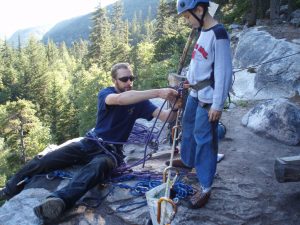9.1 Overview
What activities do you enjoy? Do you bicycle or skateboard? Do you ski or snowboard in the winter? Do you hike or rappel? In Nova Scotia there are a multitude of outdoor activities that a person can engage in. Some of these activities are riskier than others and hopefully you practice these activities safely, understanding the inherent risks. Harm reduction is minimizing the risks of what can be a risky behaviour.


What do you wear when you go biking? If you said bike shorts, sneakers, or bicycle helmet, great! Those are some of the items a person would wear to participate safely in cycling. This is harm reduction. In the world of substance use, using clean syringes, distilled water, fresh cottons, cookers, and pipes, as well as disposable mouthpieces, help individuals use substances safely. This is also harm reduction. The risky behaviour can be immediate or long term and harm reduction is a critical component of a robust drug policy in any community, province, or country. Harm reduction comes from a concern for health, recognizing the complexity of substance use.
Food For Thought
- What does no judgment mean?
- Is it possible to live/work without judging others? How?
- How do people with substance use disorders get judged?
Providing a low to no barrier service is critical for a successful harm reduction program. Canada’s support for low barrier harm reduction services has been growing steadily since the 1980’s and “national and international support for harm reduction is growing while almost all the major UN organizations responsible for drug policy now support harm reduction”.[1] To gain greater understanding, watch one of Canada’s leaders in substance use disorders discuss the concept of harm reduction as part of service delivery.[2]
Image Credits
Alaska 166 by InternetAgeTraveler via flickr is licensed under CC BY-NC-ND 2.0.
Children wearing helmets by Courtney Kenady shared under a Unsplash license.
- Wodak, A., & McLeod, L. (2008). The role of harm reduction in controlling HIV among injecting drug users. AIDS, 22, 81–92. https://doi.org/10.1097/01.aids.0000327439.20914.33 ↵
- Centre for Addiction and Mental Health. (2010, Dec. 13). Harm reduction. [Video]. Youtube. https://www.youtube.com/watch?v=KY7_ytZDlN8&t=1s ↵

